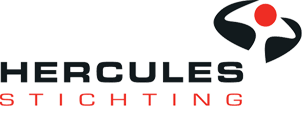Research Group TOR
TOR: research on time, culture and society
The Research Group TOR was founded in 1982 by a group of researchers of the Department of Sociology at the Vrije Universiteit Brussel (Free University of Brussels), with an interest in researching time-use and temporal structures in society. TOR has been involved in time-use research for more than 30 years.
Throughout the years TOR has widened its scope of studies from time-use studies to cultural studies in general. Today TOR conducts fundamental and applied research concerning a wide scope of topics, such as time-use, cultural trends in Flanders, media, youth culture, education, life-course and social communities. Thanks to its comprehensive expertise and experience, TOR is involved in many large-scale inter-university and policy-directed projects.
Address information
Postal address:Vakgroep Sociologie Vrije Universiteit Brussel Pleinlaan 2 1050 Brussels | Visting address:Karel Van Miert building Pleinlaan 5 1050 Brussels 2nd floor |
Time-use research
Time-use research with diary registrations tries to sketch an as precise picture as possible about the every-day activities of people. In such studies the respondents are asked to fill in all activities they were doing during their day, including the precise time and duration. There are also contextual questions connected to the activities asked, such as with whom and where the respondent was.
The first large-scale research on the time-use of Flemings took place in 1966. Since then TOR is the only Research Group that systematically and periodically organized time-use research among the Flemish population. Until now the Research Group TOR has executed three time-use surveys in Flanders; in 1999, 2004 and 2013.
Seven day diary registration
In 1999 an aselect sample of 1.474 Flemings between the age of 18 and 75, kept a one-week-diary. In 2004 a total of 1.780 respondents participated and in 2013 the number of participants was 3.260[1]. The same research method was used in 1999 and 2004. A paper-and-pencil diary is the most important measuring instrument in time-use research. The principles of the diary registration remained unchanged. The registration is continuous; this means that when respondents start a new activity, they register the one they just ended. Activities were selected from a precoded activity list. This gave the researchers the necessary detail and made the registration for the respondents easier. The activity list of 1999 consists of 154 codes, in 2004 nine codes were added. The comparability wasn't affected by the extra codes because they only added more detail.
The diary registration was coupled with two questionnaires. These questionnaires contain general indicators of time-use, but also socio-demographic variables and opinions on social issues. In 2004 the questionnaire was altered but this didn't affect the comparability with 1999. TNS DIMARSO, a research bureau, executed both studies. The studies both took place between 15th of April and 30th of October. The fieldwork was put on hold from 15 July till 1 September to minimize bias due to the summer vacation.
MOTUS (Modular Online Time Use Survey)
The use of paper diaries on the one hand generates high financial costs (for distribution and analysis) and on the other hand is burdensome for the respondent to fill in as well. To avoid these issues, the Research Group TOR decided to replace the paper-and-pencil method with an online version of a diary, developed in-house. In 2013 respondents were invited by letter to take part in the study. By this letter respondents were assigned a username and password to log in on the motus webtool.
Before the start of the registration, respondents had to fill in a pre-questionnaire with questions on background variables. After completing the questionnaire the respondents were granted access to the online diary. To facilitate the registration, respondents could download a notebook to keep record of their activities throughout the day. In addition, respondents also had a trial period the first evening of their registration to get acquainted with the webtool. After completing the diary registration, respondents were asked to fill in a second questionnaire with more time related questions.
TOR13 was the first large-scale testing of an online diary. To test the possibilities of an online registration, the respondents were extensively questioned. Aside the seven-day registration period, some respondents were randomly assigned to more specific research modes (BASIS, TRANS and MEDIA). Respondents in these modes were asked extra questions related to their media usage or their transportation, which resulted in richer data. The research methodology and research instruments of each of these modes can be found in more detail in the technical report.



